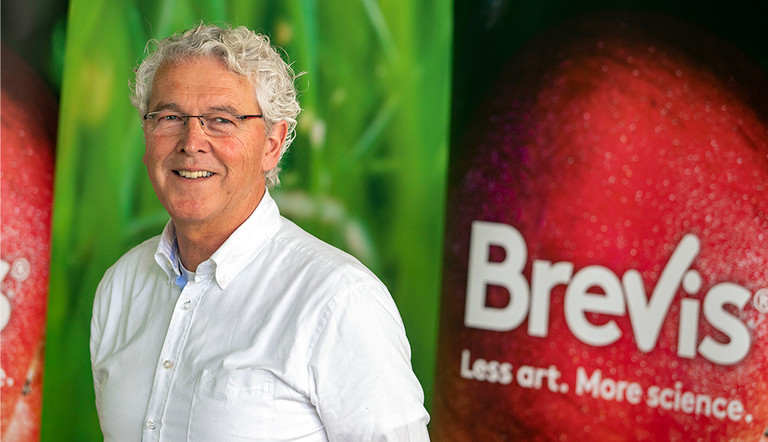
Pinpointing accurate thinning the way of the future

8/9/21 - Over-thinning and under-thinning are two recognised pain points for apple growers globally. Too much and yield is lost. Too little and costly hand-thinning is required. The latter is a particular issue in New Zealand after recent Covid-related labour shortages.
Added to that is the complication that optimal chemical thinning varies significantly according to location, climate and varieties. ADAMA’s Netherlands-based Global Brevis® Project Manager Ton Besseling says a common need expressed by growers everywhere is for not only an effective thinner, but a tool that recommends when to apply it and the required rate for best results.
He says feedback suggests that under-thinning is a far bigger issue for the industry than over-thinning. “Internationally, many growers are saying they still have to spend too much time on hand thinning.” That, he says, is where BreviSmart comes in.
BreviSmart helps determine the best timing for the application of ADAMA’s innovative photosynthesis-inhibiting fruitlet thinner Brevis. Brevis is applied when fruitlets are about 8-14 mm in size and has the management advantages of being easy to measure for tank mixing, not requiring surfactants or other additives, and being rain-fast within two to three hours.
Enhancing application accuracy with BreviSmart
BreviSmart, which was launched in New Zealand last season, adds significant value to Brevis by enhancing application accuracy. The program factors in solar radiation, temperature, fruitlet size, and apple variety. Developed in conjunction with IBM, BreviSmart uses weather data and forecasts from The Weather Company, an IBM business. Data for the next five days (including the day of calculation) is sourced from the weather stations closest to the orchard.
A report is then generated, using a traffic light system (yellow for reduced thinning conditions, green for good thinning conditions, red for strong thinning conditions). Reports are produced daily during the thinning season, allowing growers to easily see the best time to apply and plan accordingly.
In addition, growers and advisors will, naturally, factor in also block history, vigour, cultural techniques, and variety.
Ongoing data and trials informing BreviSmart algorithms
Ton says ongoing data and trials continue to inform the BreviSmart algorithms. As a recent case in point, he cites fine-tuning for apple orchards in Italy. Planted on steep hillsides, individual properties can vary as much as 600 metres in elevation, creating microclimates even within one block. Inputting additional localised weather data solved their thinning issues.
“At the end of the day you want to improve the efficacy. You want to have the best day of application and the highest effect of the product. With BreviSmart we’re able to predict the optimum moment to apply Brevis.”
Over 800 trials worldwide have contributed to the programme to date with additional apple varieties being added as they are released commercially. “We ask ‘what is an important variety’? When a variety has over 1,000 hectares planted, then we start trials,” Ton says.
More certainty
“Growers like BreviSmart because, ultimately, they feel more in control. Decisions are based on their knowledge, the advisors’ expertise and hard meteorological science.” He says advisors new to the industry, or the particular orchard, also appreciate the certainty BreviSmart gives. “The model tells you.”
Ton says that science is becoming increasingly sophisticated in Europe, with the ability to factor in orchards’ own weather stations, to provide forecasts. Ultimately, the goal is to be able to provide information, which will allow growers to customise their orchards right down to achieving the required fruit size for their markets.
Important tool complementing grower and advisor knowledge
New Zealand orchardists and advisors using the technology last season reported that BreviSmart had had been an important tool complementing grower and advisor knowledge. BreviSmart significantly decreased hand thinning and reduced monitoring and time spent walking the orchard blocks.
Brevis is proven in New Zealand and 27 other countries globally, and counting, with the goal of being in 90% of apple producing nations within the next two years.
And ADAMA New Zealand Commercial Manager Damian MacKenzie, National Lead for Brevis, says the collection of data and trials won’t be stopping. “The more we learn and share, the better we can make our response to advisors’ and growers’ needs and the better and more profitable the fruit they take to market.”